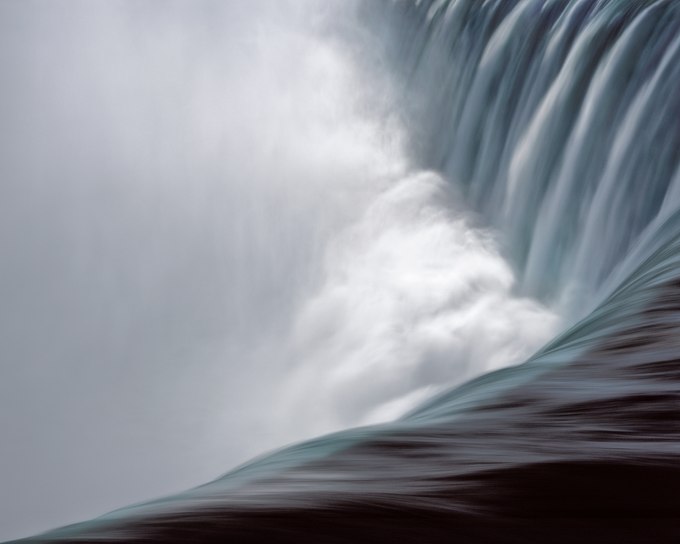Horseshoe Falls is the largest of the three waterfalls forming Niagara Falls along the Canada–United States border. Ninety percent of the Niagara River, or an average of 3000 tons of water per second, flows over the 167-foot height and the half-mile-long arc of Horseshoe Falls.
Niagara Falls was created when the Niagara Escarpment was exposed after the retreat of glaciers at the end of the last ice age. The escarpment is a cliff face that crosses the Niagara River between New York State and Ontario, Canada. It is capped by dolomite that is harder than the underlying rock and forms the leading edge of the falls, which erodes upstream about three feet yearly.
Horseshoe Falls has been a subject for artists for at least the past two centuries. Painters Thomas Cole, Albert Bierstadt, and Fredrik Edwin Church stood at the edge of the same overlook from which I made this photograph. In Bierstadt's preliminary sketch, he wrote notes about the quality of the water, its spray, color, and shades. He described the same scene I saw 120 years later when this picture was taken, "Niagara morning, the great body of the fall in light, Horseshoe fall."
At its edge, a stone wall holds back those who are drawn to the river as it tumbles into the misty void. Dozens have accidentally fallen into, dived over, or crated themselves inside barrels to brave the vertical descent. A surprising number survived, while several did not. One feels the pull of the raging water and the almost gravitational attraction that the enormous downward movement of water has upon one's perception and body. Philosopher Søren Kierkegaard observed, "He whose eye happens to look down the yawning abyss becomes dizzy."
- James Baker

